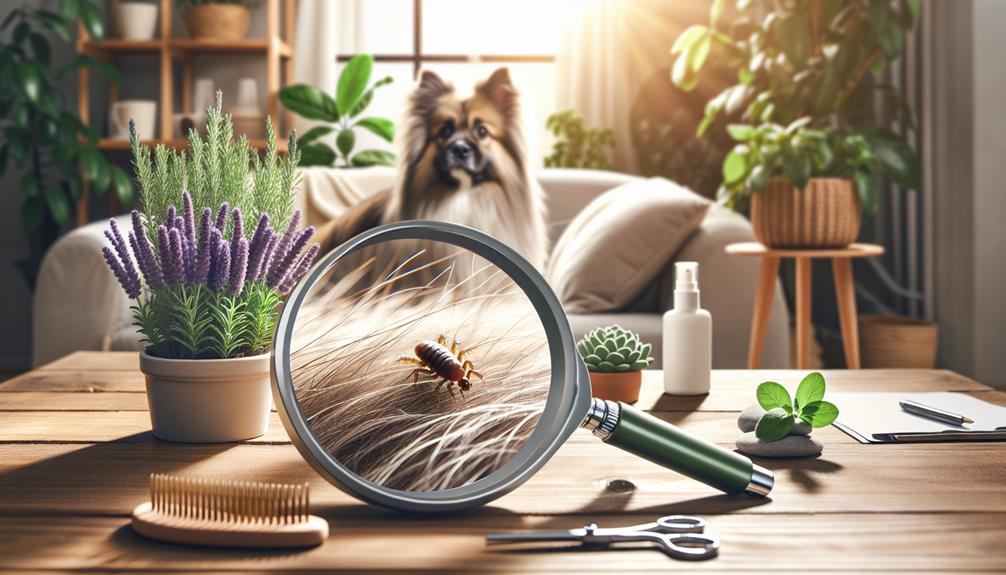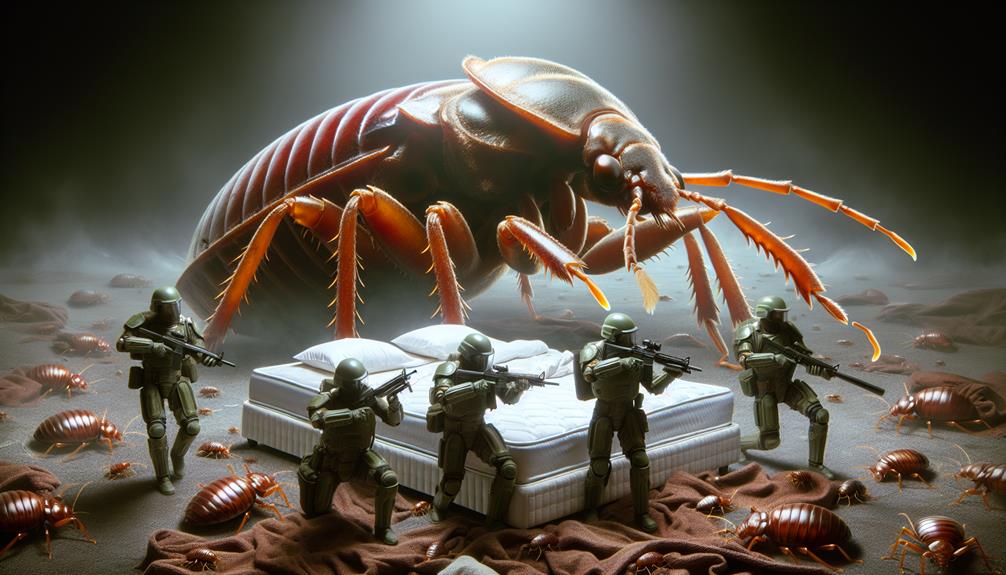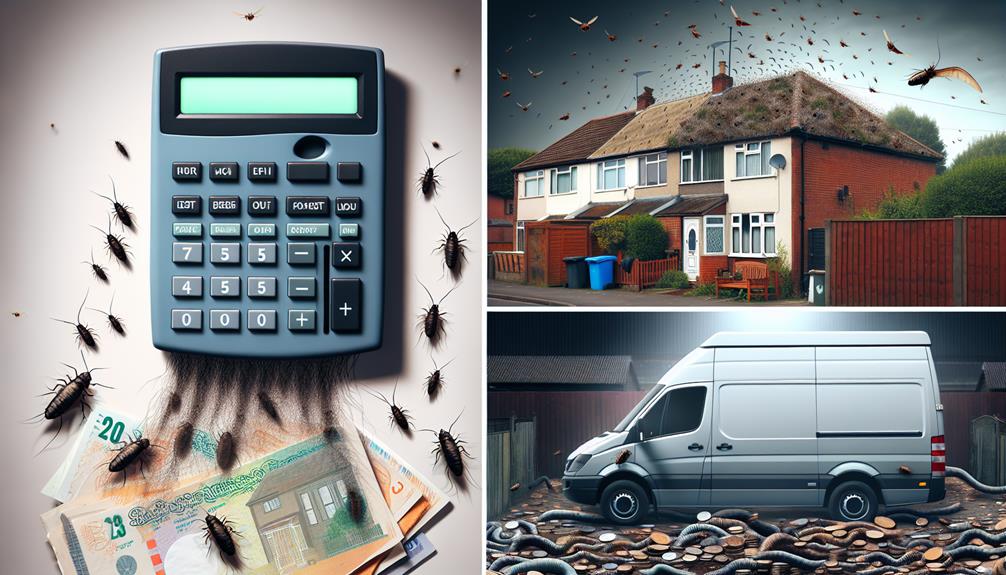Warning: Undefined array key "titleWrapper" in /home/510268.cloudwaysapps.com/dargqmgsqa/public_html/wp-content/plugins/seo-by-rank-math/includes/modules/schema/blocks/toc/class-block-toc.php on line 103
Table of Contents
Pigeon problems can be one of the most challenging situations for property owners to manage. Pest control experts must assess the entire environment in order to determine a solution that is both effective and safe for people, animals and plants. In many instances, pigeons become accustomed to an area due to a mix of environmental factors including food sources, sheltered areas and lack of predators such as cats or hawks. They then become comfortable enough with their surroundings to make it their permanent home.
When assessing pigeon infestation levels, several important considerations come into play. First, there are often multiple birds involved which require consideration when addressing the issue. Second, these birds may have already established nests nearby and can quickly replenish any losses caused by preventative measures taken against them. Finally, some municipalities have specific regulations governing how pest control professionals should handle pigeon issues on private properties within city limits. With this understanding in mind, it becomes clear why identifying the problem areas is essential before attempting remediation strategies.
Identifying The Problem Areas
Identifying the problem areas is an essential step in getting rid of pigeons permanently. Because these birds are highly adaptable and social, they can become a nuisance if not managed properly. Before attempting to remove them from your property, it’s important to consider the reasons why they have chosen your location as their new home.
The first thing you should do is inspect your property for any potential food sources that may be attracting the birds. Pigeons will feed on garbage, bird seed, pet food, or anything else left around that could provide them with sustenance. If there are easily accessible food sources present, take steps to eliminate or limit access to those items as much as possible. Additionally, check for any nesting materials such as twigs, straws or leaves which would indicate a potential breeding area.
It is also important to look at whether there are roosting sites nearby where the pigeons feel comfortable settling down after feeding throughout the day. Common roosting spots include ledges above windowsills and other elevated locations such as trees or roofs where the birds can rest undisturbed. Identifying these areas and taking measures such as closing off any exposed spaces can help reduce their presence in the long term. With this knowledge in hand, we move on to prevention strategies which will further assist in ridding yourself of this pesky pest once and for all!
Prevention Strategies
When it comes to controlling the pigeon population, prevention is always better than cure. The first step in preventing pigeons from gathering on a property is to identify and eliminate any potential attractants or sources of food. This includes removing bird feeders and other easy access points for birds to find sustenance. Additionally, garbage cans should be covered with tight-fitting lids that cannot easily be opened by larger animals like raccoons or cats. To further discourage pigeons from roosting near your property, ensure all eaves troughs are angled downwards so they do not provide comfortable resting spots for birds.
The second key element of prevention is exclusionary measures. Screening off vulnerable areas such as rooftop ventilation systems can help prevent pigeons from gaining entry into these spaces. Installing netting over open ledges where pigeons may want to rest or build nests is also effective at deterring birds from staying on the premises. Make sure all screen doors and window screens fit tightly against their frames and check them regularly for signs of damage which could allow pests inside.
Finally, cleanliness plays an important role in discouraging roosting birds since dirty surfaces can become attractive nesting sites for wildlife looking for shelter. Regularly cleaning outdoor surfaces such as balconies or rooftops will reduce the chance of attracting unwelcome visitors onto your property. With the right preventive strategies in place, you can significantly decrease the chances of unwanted avian guests appearing on your doorstep in the future.
Physical Deterrents
Physical deterrents are a popular method of pigeon control and often the first line of defence against pigeons. Physical measures can be helpful in deterring pigeons from entering an area or roosting on buildings, as well as providing peace of mind for those wanting to keep pigeons away. However, physical deterrents alone may not be enough to get rid of pigeons permanently.
Netting is one of the best physical deterrents for keeping birds away from certain areas such as balconies, rooftops, and other open spaces. Netting should be tightly fitted over any opening that could provide access for birds into the space being protected. Wire mesh with small openings is also effective at preventing birds from accessing particular areas while still allowing light and air to flow through it. Mesh must be tautly stretched to prevent birds from squeezing between gaps in the wire.
Spikes are another type of physical deterrent used frequently around buildings where birds like to perch or nest. These spikes come in many shapes and sizes and are usually made out of metal, plastic, or rubber materials designed specifically to create uncomfortable landing surfaces that will discourage birds from returning again. Besides installing them on ledges, eaves, window sills, etc., they can also be placed along beams inside warehouses to keep pest birds away from stored products or supplies.
Physical deterrence techniques offer short-term solutions but may require frequent maintenance depending upon the situation; therefore chemical deterrents might need to be considered if more permanent control is desired.
Chemical Deterrents
Chemical deterrents are one of the most effective methods for eliminating pigeon populations permanently. These products work by creating an unpleasant environment that discourages birds from nesting and perching in a particular area. The most common form of chemical deterrent is bird repellent, a non-toxic solution used to repel pigeons without harming them. Repellents can be sprayed directly onto surfaces or applied using foggers and other delivery systems. Additionally, some chemical deterrents come in granular form, which can be spread over large areas such as rooftops and lawns.
Another type of chemical deterrent is bird spikes. Bird spikes are strips of metal with sharp points designed to prevent birds from landing on ledges and other structures where they might otherwise roost and nest. Spikes should always be installed according to manufacturer instructions since improper installation could cause injury to the birds.
These two types of chemical deterrents have proven successful in reducing and ultimately eliminating pigeon populations in many settings. When implemented properly, these solutions provide long-term relief from pesky pest problems associated with pigeons. To ensure maximum effectiveness, it is important to follow all product instructions carefully and maintain regular inspections for any signs of new activity so that additional steps may be taken if necessary. With this proactive approach, permanent control over troublesome pigeon populations can soon be achieved. Transitioning into electronic deterrence devices now presents another viable option for controlling nuisance birds like pigeons.
Electronic Deterrents
Electronic deterrents are an effective way to get rid of pigeons permanently. These devices emit a mixture of sounds and visual stimuli designed to startle the birds, causing them to flee the area. Electronic deterrents can be used in combination with chemical deterrents for maximum effect.
The benefits of electronic deterrents include:
- Instantaneous results – Birds are scared away as soon as they encounter the device’s sound or light signals.
- Sounds – Ultrasound, ultrasonic pulsing, monophonic tones, and other noise-making variants may be used depending on the situation.
- Lights – Flashing lights, strobe lights, LED lights, and spotlights are all common types of light deterrents that help keep birds away from areas where they’re not wanted.
- Long-term effectiveness – Electronic deterrents only need to be turned on when there is activity; however, their effects will remain long after they have been switched off. This makes them ideal for situations where regular avian activity is expected but cannot always be monitored closely.
- Safe and humane – Unlike chemical repellents which contain hazardous chemicals that could potentially harm animals or people if not handled carefully, electronic deterrents operate without any risk of exposure to harmful materials. Additionally, since no physical contact takes place between humans and pests during an electronic pest control session, it ensures a more humane approach towards animal management than traditional methods such as trapping or shooting would involve.
In addition to these advantages, electronic deterrence solutions also offer cost savings compared to conventional methods because they require minimal maintenance over time and do not necessitate frequent replacement like some chemical solutions might entail. All in all, utilizing electronic devices for bird control is often considered a safe and efficient method for getting rid of nuisance birds quickly and effectively while minimizing environmental impact at the same time. From this point forward we move our discussion into ‘animal control services’.
Animal Control Services
Animal Control Services are a viable solution to permanently removing pigeons from your property. This method involves capturing and relocating the birds, as well as preventing access for more to enter.
The below table compares different Animal Control methods:
| Method | Pros | Cons |
|---|---|---|
| Trapping/Relocation | Humane way of managing pigeon infestations; Effective long term control if done properly. | Costly; Unskilled personnel can cause problems such as stress or injury to the birds. Also requires permits in some areas. |
| Exclusion/Barrier Systems | Effective at keeping out new birds while also making existing ones uncomfortable enough that they may leave on their own. Can be combined with trapping techniques for maximum effect. | Must be maintained regularly; May not be practical due to local regulations or environmental factors like landscape design. |
When it comes to selecting an Animal Control Service, experience and licensing should always be top priority when hiring professionals for this job. It is essential that those handling these sensitive animals do so in a humane manner, taking into consideration all aspects of their well-being throughout the process. Additionally, proper safety protocols must always be followed to ensure no damage occurs either to people or property during removal activities.
Selecting an experienced professional will help guarantee success in removing pigeons from your premises permanently and safely. Ultimately, understanding which bird control options work best for your particular situation is key to successfully eliminating them from your property once and for all. With careful planning and execution, you can minimize any potential harm caused by getting rid of these pests while still achieving the desired results effectively and quickly.
Attractants To Discourage Pigeons
Once animal control services have been enlisted to help with a pigeon problem, the next step is to identify and eliminate any attractants that may be encouraging pigeons to stay in an area. The following are common items that should be addressed when trying to permanently get rid of pigeons:
- Unsecured garbage cans – Pigeons will often eat from uncovered garbage bins, so it’s important to make sure lids are secure and all containers are regularly emptied.
- Open food sources – Standing water or pet food left outdoors can also draw in birds looking for sustenance. It’s best practice not to leave these types of items outside unattended, even if they appear well secured within a bin or container.
- Bird feeders – While bird feeders provide nourishment for many species of wild birds, they can also act as an open invitation for other pests like pigeons, who find them just as appetizing. If bird feeders must remain outside, it is recommended that specialized versions designed specifically to deter pest birds be used instead.
- Loose building materials – Things like broken tiles on rooftops or loose grates around ventilation systems can offer easy access points into buildings where pigeons might nest or roost inside attics or rafters out of sight and hard to reach by humans. Any holes or openings should be sealed up immediately upon discovery.
For persistent infestations beyond what household strategies can address, professional solutions such as trapping and exclusion techniques may need to be employed in order to completely remove unwanted birds from the premises for good.
Professional Solutions
Professional solutions for eliminating pigeons are available from experienced pest control experts. These services include physical exclusion systems, such as netting or spikes that can be installed in areas of infestation to stop birds from accessing the area. Trapping is also an option that removes problem birds without causing them harm. In addition, certified bird specialists can apply repellents and deterrents that discourage the presence of pests around homes and businesses.
In some cases, it may be necessary to remove nests and eggs if they have been established on rooftops or other locations where they could potentially cause damage or create a health hazard. For this type of work, consult with professionals who specialize in humane wildlife removal methods and use proven techniques to safely eliminate nests and eggs without adversely affecting local populations of birds.
For long-term prevention measures, consider installing roosting barriers or pigeon-proof construction materials to make sure the area remains unattractive to pigeons for years to come. Additionally, regular maintenance of the property will ensure any potential nesting sites are not created or left unchecked.
Long-Term Solutions
The use of professional solutions for getting rid of pigeons is effective in the short term, however, to ensure a permanent solution long-term solutions must be employed. One such solution is to make sure there are no food sources or nesting areas that attract the birds to your property. This means keeping your outdoor area clean and free of any potential food scraps or garbage. Additionally, if you have trees on your property it would be wise to trim them so they can’t be used as nesting areas by the birds.
Another option is to install physical barriers such as netting over places where the pigeons might enter like open windows or vents. A third option is using repellents like sound machines, water cannons, flashing lights, and even kites with fake predators attached to scare away the birds when they come close. Finally, bird spikes can also be installed around ledges and other surfaces where pigeons may attempt to land and roost.
By utilizing these strategies together one can create an environment less appealing for pigeons which will help keep them away from your property permanently. Proper maintenance of these deterrents and regular checking for new signs of pigeon activity is necessary for successful long-term control.
You may also enjoy reading this article
Was This Article Helpful?
- Please provide feedback and comments to help us improve our content.
- Share your experiences and any additional tips you have for dealing with pests.
Share this Post



